
Melting, Mating, and Moving: Adirondack Life in Early Spring
March 28, 2017
By: Guest contributor - John Daivs, Split Rock Wildway
This article orginally appreared in the Essex on Lake Champlain - Essex, NY Community Blog
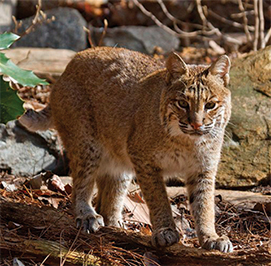
Bobcat
Perhaps uncharitably, some of us lucky enough to inhabit the Adirondack Park year-round refer to early spring as “Mud Season.” Mud, slush and soft ground surely are parts of the winter-to-spring transition here; but so are rushing rivers, running sap, surging freshets, budding trees, and migrating and reproducing animals.
Indeed, we could as well call this lustiest time of year “Mating Season” or “Movement Season.” For throughout spring, most wild animals are searching for mates, food for their young, nest 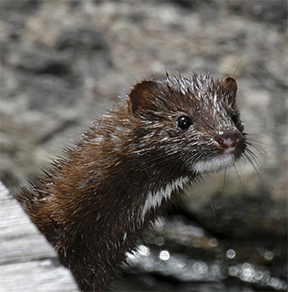
Minksites, or new territories. Movement is as central to wildlife as are food, air, water, and cover; yet it also brings risks – especially in a world fragmented by roads and other human development.
Let’s recall a few examples of animals on the move in early spring: Bobcats, Mink, River Otters, black Bears, and other carnivores are traveling widely, to find food to meet the ravenous needs of their nursing young. Beavers old enough to yield their big brother and sister roles to the next generation are dispersing to find territories of their own.
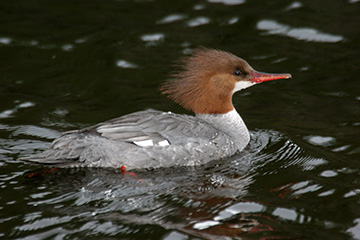 Merganser
Merganser
Early migratory birds, like Red-wing Blackbirds and mergansers and loons, are returning from their winter homes and reclaiming territories. Winter resident birds, like Barred Owls, may already have established nests and laid eggs, and thus be hunting widely to feed their chicks. Frogs and salamanders are hopping and crawling to their breeding pools and swamps (don’t let bombastic politicians drain them!).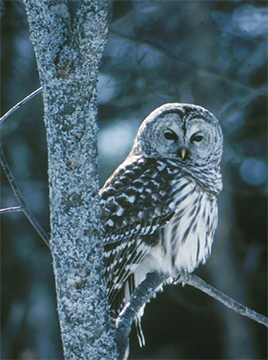
Barred Owl
So, as upstanding members of the biotic community, it falls on us to be extra careful in our own travels during spring. If we drive our cars on a warm rainy night in early spring, we will likely run over a few of our neighbors. Alas, on such wet nights, we motorists kill countless salamanders and frogs as they follow ancestral travel routes, now dissected by roads, seeking vernal pools or other breeding sites. Even less able to sustain the tragic road-kill losses are the carnivores, raptors, and songbirds we too often hit, again especially in spring and at night.
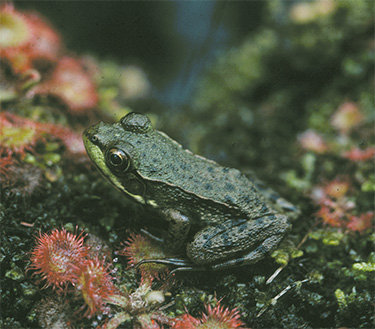
Frog There are long-term solutions to the tragedy of road-kill, including carefully-placed tunnels under roads for amphibian crossings, modified culverts for fish passage, and overpasses for large mammal movement. As we build support for these engineering improvements – which can be made in concert with retrofitting infrastructure to make it more durable in the face of climate chaos – we should also make the personal changes that can help keep spring a season of motion. If we minimize night-time driving and slow down, our wild neighbors can keep moving.

John Davis works for and explores wildlife connections with Wildlands Network, The Rewilding Institute, Eddy Foundation, and regional conservation groups. He is a land steward in Split Rock Wildway, a wildlife corridor linking the Champlain Valley with the High Peaks.




